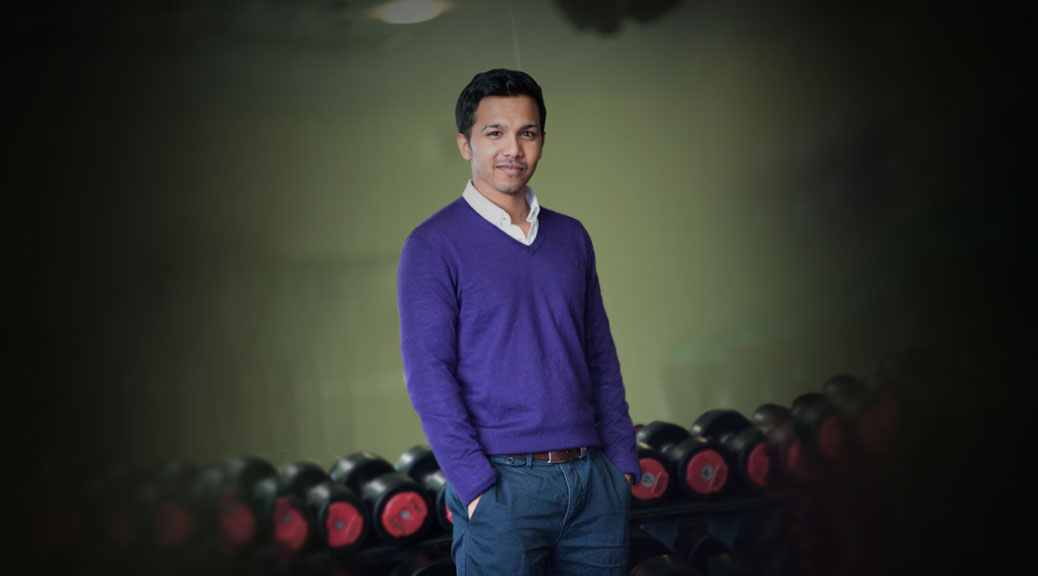Fiona McAuslan caught up with FitPro LIVE presenter, GP and Level 4 fit pro Dr Dane Vishnubala and found out how fit pros can make a difference to the obesity crisis, what GPs really think about fit pros training their patients – and how much they know.
Fiona McAuslan: There’s been a lot in the press recently about the dangers of sugar and hidden sugar in the UK diet. How big a problem is it in your opinion?
Dr Dane Vishnubala: We know the increased sugar consumption is a problem in the UK. Public Health England (PHE) has produced a great document called Sugar Reduction – The Evidence for Action summarising this. We know that as a population whole we consume more sugar than the recommendations. The Scientific Advisory Committee on Nutrition (SACN) has recommended that the average population’s maximum intake of sugar should be halved. PHE estimates this could potentially save the NHS up to £500m every year. Anecdotally in the patients I see in my own practice, the consumption of sugar is high and many of our patients are not aware of the dangers of it. I think it’s also being aware of what has sugar in and how much – there are many things we buy which we don’t associate with high sugar. The recent press articles regarding drinks from coffee shops highlight this.
FM: Can you ever address diabetes and pre-diabetes with exercise alone?
DV: No, it needs to be a combined approach. Most of the evidence suggests nutrition is more important than exercise but that is not to say exercise is not important and, in an ideal world, both would be recommended to all patients and all patients would do it! For diabetes, both cardiovascular training and resistance training have a role to play.
FM: Is the average GP likely to advocate exercise to their overweight patients?
DV: I think most GPs will agree physical activity is important; however, physical activity has never formed a big part of the GP or doctor training curriculum. Public Health England has identified this and my role with 13 other GPs around the country is to educate hospital doctors, GPs and nurses about the benefits of physical activity and exercise and give them the tools to be able to talk to patients and motivate them appropriately.
So, in answer to your question, we know it’s important, we know we could do it better, we know patients are likely to take notice if we promote physical activity more. We are doing something about it through a number of initiatives, including the Clinical Champion physical activity scheme of which I am a member.
FM: You’re a Level 4 fit pro as well as a GP and you have previously sat on the exercise referral advisory committee at FIA (now ukactive). What do you think are the biggest obstacles to getting more doctors using a GP referral scheme?
DV: To get doctors to use exercise referral schemes more, I think we need to advertise the schemes more at primary care clinicians so they are aware. We need to show evidence that our exercise referral schemes improve health, rather than just saying exercise works, and we need to make the system of referral as simple as possible, as most GPs are generally overworked and have very little time with patients and lots of admin, so it needs to be something realistic.
I think exercise referral is a great thing. I am extremely biased; I do think sometimes, however, in the fitness industry we have a bias to think that all patients with disease should be referred to the hospital. Many can exercise normally and we do have a tendency to over-medicalise. I think it’s important to encourage those who would not want to do a gym or health club-based session to keep active, even if that may be without supervision.
As a doctor, it is about getting to know your patients and their needs and then deciding what resources are best for them. Is it exercise referral? Or is it a local dancing class or perhaps a Nordic walking group? There are lots out there beyond gym-based exercise referral and we need to make sure we send the right patient to the right service to suit them.
FM: What would GPs like to see from the fitness profession before they start using GP referral schemes more widely?
DV: Unlike many other healthcare professionals, there is a big variety of standard, knowledge and experience among fitness professionals. Qualifications are regulated very differently. In the fitness industry, there is no one who can really enforce standards and check that instructors are continuing to learn and are up to date. Technically, you can get your qualifications 10 years ago and do no further learning, yet still be insured to practice.
Training courses are variable: some are fantastic; others sadly are taught by big names but their teaching is not evidence (research) based. In healthcare, nearly everything we do is backed up by research and I think a move particularly in the teaching of qualifications to a far more research-driven focus across the board will help to raise the standards of our exercise referral in the industry and, hopefully, with it more GP engagement. GPs and many healthcare groups have to be on a register; however, in the fitness industry, this is not the case.
FM: Are GPs concerned that PTs’ shorter training might mean their level of expertise does not match a GP’s?
DV: I have to say I have met some extremely knowledgeable and competent exercise referral instructors. In fact, both in York and Bromley, where I have worked, the exercise referral instructors are superb. I don’t think it’s always the length of the qualification, as there are many other factors that make a good fit pro; however, I think very short courses, online courses, etc. do not help to raise the bar.
However, we are in 2016 and fitness education is predominantly online, so we need to look at how we design education to ensure we minimise reduction in quality. Blended learning – some online and some face-to-face – is I feel the best compromise.
FM: Is fitness education good enough in this country?
DV: This may sound brutal but I think the answer has to be no. There are some fantastic companies out there delivering training but, for every one of those, there is a quick online course or a course delivered by tutors with only the same qualifications and minimal experience. I believe we need to raise the bar on who can teach.
For example, I currently teach in the Hull York Medical School and you cannot teach unless you have been practising clinically for at least five years and you must continue to be practising clinically; however, in theory, anyone with a Level 2 certificate can teach a Level 2 course. I think there are many things that need to be improved but whatever we do we need to prevent this race to the bottom and look at how we can increase the standards across the board.
I believe we need to push critical thinking more; so, rather than tell PT students, we should show them the research and discuss and debate things. This way, they learn skills that will future proof them, as our understanding is constantly evolving with new evidence. I am interested to see what the Chartered Institute for the Management of Sport and Physical Activity (CIMSPA) comes up with, which appears to have taken on the task. I believe we need to have a culture of research-driven practice, regular CPD and potentially the use of a portfolio to document and aid in proving that that instructor is keeping up to date.
FM: What is the essential information that fit pros need to have about diabetes and pre-diabetes in order to deliver safe programmes to their clients?
DV: I think if a fit pro has a good grasp of how glucose is regulated in the body and what goes wrong in diabetes and pre-diabetes, then they are in a good position theoretically. I think it is also important to understand what puts people at risk of diabetes and why people make certain lifestyle choices. I think, as well as understanding the latest evidence with regards to exercise prescription in diabetes, they should also understand and realise the importance of diet. But, above all, the fit pro needs to understand how to influence and change behaviour and be able to apply those techniques to clients. We spend quite some time looking at behaviour on our Level 4 courses as this is extremely important. Our team of doctors makes sure the clinical stuff is taught well, that it is up to date and that it is made interesting by talking about experiences they have had. Finally, we believe in teaching fit pros how to read research so they can keep themselves up to date.
FM: Some fit pros who are only Level 2 qualified might feel worried about working with clients with medical conditions. Is their concern a reason to avoid those clients or should they be striving to get as many people active as possible, particularly problem populations such as these?
DV: Difficult question. I think, from a public health viewpoint, we probably just need to get more people active and worry less about who we can and can’t work with. However, from a professionalism standpoint and insurance standpoint, if that is a group of people you want to work with, it makes sense to get qualified. Given we have an ageing population, I do think at least to have exercise referral is a useful qualification for any PT. I do generally find working with those groups of people far more rewarding too!







